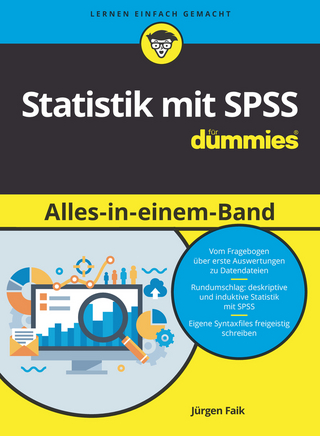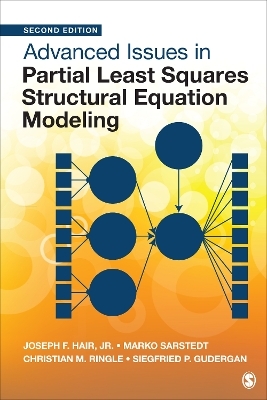
An Introduction to Statistics and Data Analysis Using Stata®
SAGE Publications Inc (Verlag)
978-1-5063-7183-2 (ISBN)
An Introduction to Statistics and Data Analysis Using Stata®: From Research Design to Final Report provides a step-by-step introduction for statistics, data analysis, or research methods classes using Stata software. Concise descriptions emphasize the concepts behind statistics rather than the derivations of the formulas. With real-world examples from a variety of disciplines and extensive detail on the commands in Stata, this text provides an integrated approach to statistical analysis, research design, and report writing for social science students.
Lisa Daniels is the Hodson Trust Professor Emeritus of Economics at Washington College in Chestertown, Maryland. She specializes in development in Africa, where she worked for 10 years, beginning as a Peace Corps volunteer. During her time in Africa, she studied agricultural markets, market information systems, poverty trends, and micro- and small-scale enterprises. As part of her research on micro- and small-scale enterprises, she directed national surveys of 7,000 to 56,000 households and businesses in Bangladesh, Botswana, Kenya, Malawi, and Zimbabwe funded by the U.S. Agency for International Development. In each survey, she was responsible for the questionnaire design, sample selection, data collection and analysis, and report preparation. Her work from these surveys and other research in Africa and Asia appears in consulting reports and in peer-reviewed journals. In addition to research and fieldwork, she has taught a range of courses over the past 28 years, including a research methods course and a data analysis course that she has taught over 20 times. She has also presented her work related to teaching at more than a dozen workshops. Nicholas Minot is a Senior Research Fellow at the International Food Policy Research Institute (IFPRI) in Washington, D.C. Since joining IFPRI in 1997, he has carried out research on agricultural market reform, income diversification, spatial patterns in policy, and food price volatility in developing countries. This research often involves carrying out surveys of farmers, cooperatives, traders, and consumers to better understand changes in food marketing systems. In addition to research, he is involved in outreach and capacity-building activities, including offering short courses on the use of Stata for survey data analysis. Before joining IFPRI, he taught at the University of Illinois in Urbana–Champaign, served as a policy adviser in Zimbabwe, and analyzed survey data in Rwanda. Overall, he has worked in more than two dozen countries in Latin America, sub-Saharan Africa, North Africa, and Asia.
Part 1: The research process and data collection
Chapter 1: The research process and data collection
Read the literature and identify gaps or ways to extend the literature
Examine the theory
Develop your research questions and hypotheses
Develop your research method
Analyze the data
Write the research paper
Chapter 2: Sampling techniques
Sample design
Selecting a sample
Sampling weights
Chapter 3: Questionnaire design
Structured and semi-structure questionnaires
Open- and closed-ended questions
General guidelines for questionnaire design
Designing the questions
Collecting the response data
Skip patterns
Ethical issues
Part 2: Describing Data
Chapter 4: An Introduction to Stata
Opening Stata and Stata Windows
Working with existing data
Entering your own data into Stata
Using log files and saving your work
Getting help
Summary of commands used in chapter
Chapter 5: Preparing and transforming your data
Checking for outliers
Creating new variables
Missing values in Stata
Summary of commands used in chapter
Chapter 6: Descriptive statistics
Types of variable and measurement
Descriptive statistics for all types of variables -- frequency tables and modes
Descriptive statistics for variables measured as ordinal, interval, and ratio scales -- median and percentiles
Descriptive statistics for continuous variables -- mean, variance, standard deviation, and coefficient of variation
Descriptive statistics for categorical variables measured on a nominal or ordinal scale -- cross tabulation
Applying sampling weights
Formatting output for use in a document (Word, Google Docs, etc.)
Graphs to describe data
Summary of code used in chapter
Part 3: Testing Hypotheses
Chapter 7: The Normal distribution
The normal distribution and standard scores
Sampling distributions and standard errors
Examining the theory and identifying the research question and hypothesis
Testing for statistical significance
Rejecting or not rejecting the null hypothesis
Interpreting the results
Central limit theorem
Presenting the results
Summary of commands used in chapter
Chapter 8: Testing a hypothesis about a single mean
When to use the one-sample t test
Calculating the one-sample t test
Conducting a one-sample t test
Interpreting the output
Presenting the results
Summary of commands used in chapter
Chapter 9: Testing a hypothesis about two means
When to use a two independent-samples t test
Calculating the t statistic
Conducting a t test
Interpreting the output
Presenting the results
Summary of commands used in chapter
Chapter 10: Analysis of variance
When to use one-way analysis of variance
Calculating the F ratio
Conducting a one-way analysis of variance test
Interpreting the output
Is one mean different or are all of them different?
Presenting the results
Summary of commands used in chapter
Chapter 11: Cross-tabulation and the chi-squared test
When to use the chi-squared test
Calculating the chi-squared test
Conducting a chi-squared test
Interpreting the output
Presenting the results
Summary of commands used in chapter
Part 4: Exploring relationships
Chapter 12: Linear regression analysis
When to use a regression analysis
Correlation
Simple regression analysis
Multiple regression analysis
Presenting the results
Summary of commands used in chapter
Chapter 13: Regression Diagnostics
Measurement error
Specification error
Multicollinearity
Heteroskedasticity
Endogeneity
Non-normality
Presenting the results
Summary of commands used in chapter
Chapter 14: Regression analysis with categorical dependent variables
When to use logit or probit analysis
Understanding the logit model
Running logit and interpreting the results
Logit vs probit regression models
Regression analysis with other types of categorical dependent variables
Presenting the results
Summary of commands used in chapter
Chapter 15: Writing a research paper
Introduction section of a research paper
Literature review
Data and methods
Results
Discussion
Conclusions
| Erscheinungsdatum | 07.02.2019 |
|---|---|
| Verlagsort | Thousand Oaks |
| Sprache | englisch |
| Maße | 187 x 231 mm |
| Gewicht | 690 g |
| Themenwelt | Mathematik / Informatik ► Mathematik ► Computerprogramme / Computeralgebra |
| Sozialwissenschaften ► Politik / Verwaltung ► Politische Theorie | |
| Sozialwissenschaften ► Soziologie ► Allgemeines / Lexika | |
| Sozialwissenschaften ► Soziologie ► Empirische Sozialforschung | |
| Wirtschaft ► Volkswirtschaftslehre ► Ökonometrie | |
| ISBN-10 | 1-5063-7183-3 / 1506371833 |
| ISBN-13 | 978-1-5063-7183-2 / 9781506371832 |
| Zustand | Neuware |
| Haben Sie eine Frage zum Produkt? |
aus dem Bereich


